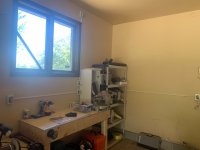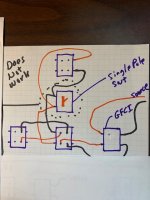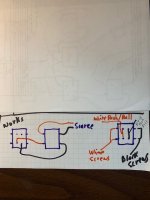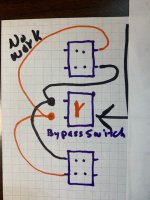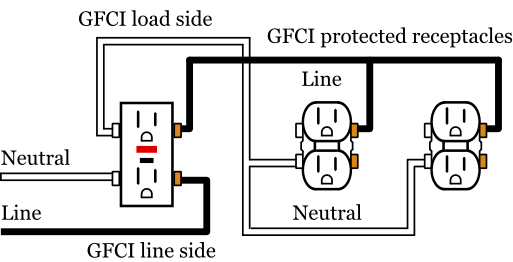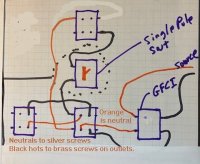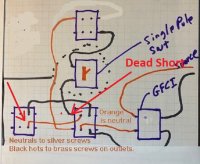I HATE electricity.
Rant off....
I have a GCFI and want to add 2 outlet receptacles and another outlet receptacle with a switch down stream.
Photo show the set up.
1 = GCFI
2 = New outlet #1
3 = New outlet #2
4 = Switch
5 = New outlet #3 for overhead light
Second picture is how I wired and it does not work
Third picture shoes 1 outlet after GCFI (as a test to see if I can go beyond the GCFI) - That works.
Forth picture shows the desired setup bypassing the switch (in case that was the problem) but that does not work either.
Suggestions please!!
Rant off....
I have a GCFI and want to add 2 outlet receptacles and another outlet receptacle with a switch down stream.
Photo show the set up.
1 = GCFI
2 = New outlet #1
3 = New outlet #2
4 = Switch
5 = New outlet #3 for overhead light
Second picture is how I wired and it does not work
Third picture shoes 1 outlet after GCFI (as a test to see if I can go beyond the GCFI) - That works.
Forth picture shows the desired setup bypassing the switch (in case that was the problem) but that does not work either.
Suggestions please!!
Attachments
Last edited:

